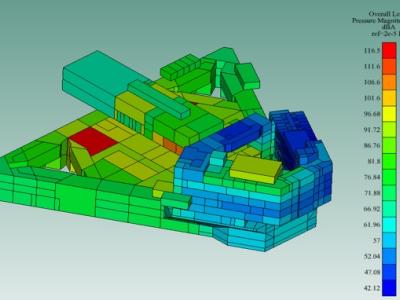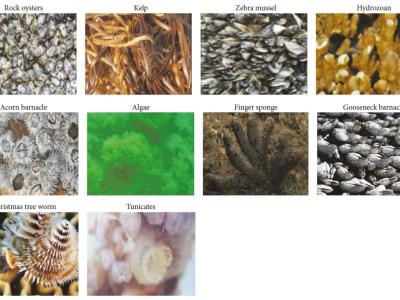Noise Data for Offshore Platform

- Citation Author(s):
-
Cheng ChinXi Ji
- Submitted by:
- Cheng Siong Chin
- Last updated:
- DOI:
- 10.21227/vhsn-qh08
- Data Format:
- Links:
 637 views
637 views
- Categories:
- Keywords:
Abstract
Noise control is required to ensure crew habitability onboard an offshore platform. Applying noise prediction is important to identify the potential noise problem at the early stage of the offshore platform design to avoid costly retrofitting in the implementation stage. Noise data were collected. The 4 output targets are namely: spatial sound pressure level (SPL), spatial average SPL, structure-borne noise and airborne noise at different octave frequencies (e.g. 125Hz, 250Hz, 500Hz, 1000Hz, 2000Hz, 4000Hz, 8000 Hz). The spatial SPL consists of both direct and diffuse field (or reverberant field) obtained from a commercial SEA modeling software called VAOne ™ and MATLAB™, respectively. The spatial SPL is achieved from the logarithmic sum of both the direct field and reverberant component. The 13 inputs are the parameters of the rooms in the offshore platform.
Instructions:
1)Download dataset and unzipped file into same folder.
2) Run "A_Read_Data.m" in MATLAB command prompt.
3) Dataset information
The 4 output targets namely: spatial sound pressure level (SPL), spatial average SPL, structure-borne noise and airborne noise at different octave frequencies (e.g. 125 Hz to 8000 Hz). The spatial SPL consists of both direct and diffuse field (or reverberant field) obtained from a commercial SEA modeling software called VAOne ™ and MATLAB™, respectively. The spatial SPL is achieved from the logarithmic sum of both the direct field and reverberant component.
The 13 inputs are namely.
1. total source power level (SWL)
2. room type
• Type 1- unmanned machinery room (maximum allowable 110dBA)
• Type 2- unmanned machinery room (maximum allowable 90 dBA)
• Type 3- manned machinery room (maximum allowable 85dBA)
• Type 4- unmanned instrument room (maximum allowable 75 dBA)
• Type 5- store, workshop and instrument room (maximum allowable 70 dBA)
• Type 6- living quarter public area, change room, corridor and toilets (maximum allowable 65 dBA)
• Type 7- living quarter public area, laboratory, local control room, galley, mess room, office, gymnasium, lobby (maximum allowable 60 dBA)
• Type 8- cabin, hospital, central control room (maximum allowable 45dBA)
3. room surface area
4. room volume
5. first nearest source sound power levels
6. source/receiver distance from the first source
7. second nearest source sound power levels
8. source/receiver distance from the second source
9. room mean absorption coefficient
10. the maximum sound power level of adjacent rooms
11. panel or insulation thickness
12. room type of the adjacent room
13. number of decks to the main deck








